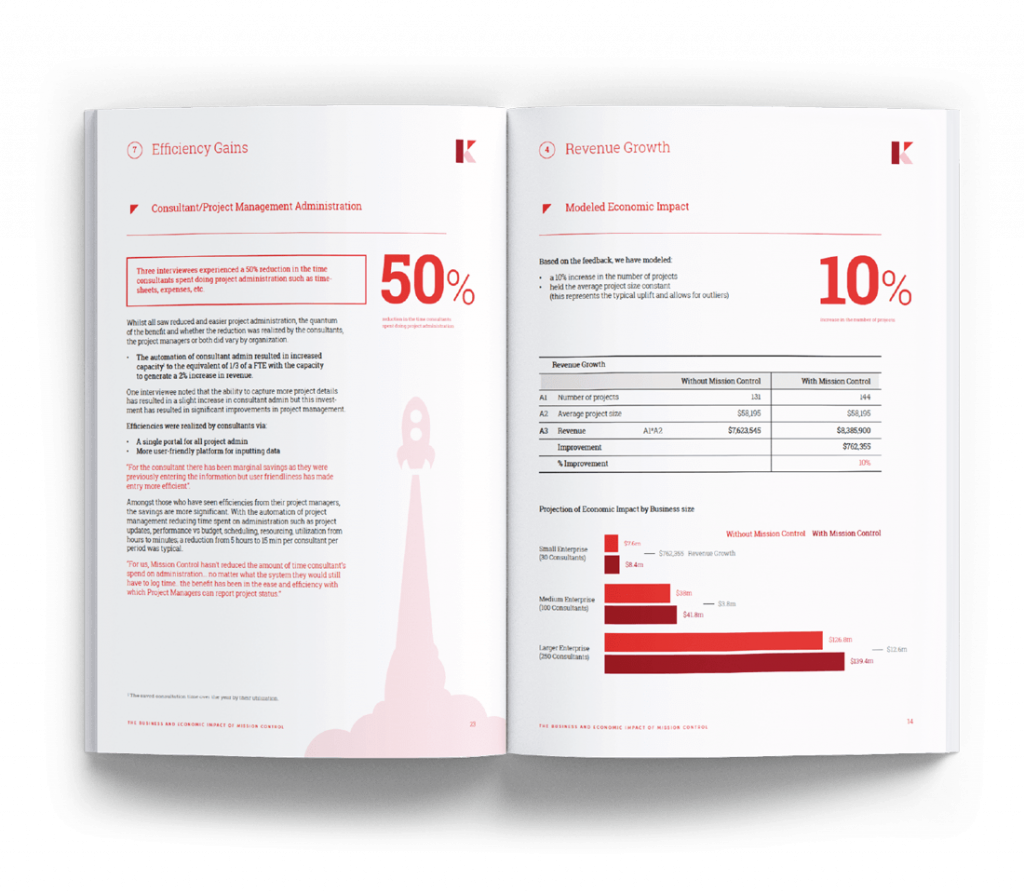You have this excellent idea for a project. You’ve done your research, and you believe it’s something worth investing resources in. But how do you convince the decision-makers within your organization or external stakeholders to buy into your idea?
Start with a persuasive project proposal.
A project proposal is a written elevator pitch that helps you present your project in a concise but efficient manner. A well-written proposal helps stakeholders understand what you want to do, what you will deliver, what it will cost them, and, most importantly, how the project will benefit them.
Not quite sure where to start? In this guide, we’ll go over:
- What a project proposal is
- 6 types of project proposals
- Benefits of a good project proposal
- Things to consider before writing a proposal
- How to write a project proposal in 6 steps
What Is a Project Proposal?
As we’ve already mentioned, a proposal is your elevator pitch. It’s what you use to convince everyone else why a project is necessary or crucial to undertake.
In practical terms, a project proposal is a document project managers use to outline everything stakeholders need to know about a project. This includes the timeline, budget, objectives, and goals.
Writing a project proposal is an essential first step toward convincing stakeholders to support your proposed project.
6 Types of Project Proposals
There are six types of proposals, each with different goals and distinct requirements. As a project manager, you must understand the different formats to write yours effectively.
- Solicited: You send this proposal in response to an external company’s Request for Proposal (RFP). In this case, you’re often competing against other companies, so you have to prove that you’re the most qualified and capable to complete the project. Do thorough research and write persuasively.
- Unsolicited: An unsolicited proposal is sent without a Request for Proposal (RFP). This means you’re not directly in competition with other companies or teams, but others may have the same idea as you and send in their proposals as well. As always, you’ll need to write persuasively to convince the company or stakeholder you’re pitching to that they need you.
- Informal: This is a proposal you send in response to an informal client request. The rules for this type of proposal are less strict, and you can follow your preferred format.
- Renewal: A renewal proposal is one you send to existing clients to convince them to extend their services with your organization. The catch with renewal proposals is to emphasize past results and predict future and/or ongoing benefits for the client.
- Continuation: Project managers send continuation proposals to investors to remind them that the project is underway. The goal is to inform the investors about the project rather than persuade them.
- Supplemental: This proposal is almost similar to a continuation proposal. The difference is that you send it mid-project to convince the investor to give you additional necessary resources.
Benefits of a Good Project Proposal
A good project proposal will be helpful to you, your business, and your client in the following ways.
Drives innovation
You need to offer innovative ideas in which stakeholders will feel confident investing resources. Proposing a project that will help drive innovation and new pathways will help your business (and your clients) achieve its goals.
Helps you plan for the future
The value of your proposal goes beyond getting approval. Once your project is given the green light, you can use the proposal as a guide on allocating finances, time, and other resources.
Keeps teams focused
A good project proposal can also help highlight how teams will utilize their time to focus on key business deliverables as laid out.
Anticipate and solve problems early
A detailed project proposal highlights opportunities and provides insights into potential risks and problems that may occur down the line.
While no one can predict the future, experienced project managers can create proposals that act as a crystal ball of sorts. This assessment and anticipation of potential risks and issues can be reassuring. Discussing these challenges before the project kicks off can help teams prepare and sometimes even solve problems before they escalate.
Things to Consider Before Writing a Project Proposal
Before you begin writing your project proposal, there are a few key things to consider.
Your audience
First, identify who the decision-makers are and what each their goals and preferences are. Before you begin writing your pitch, you need to know whom you’re pitching to.
Find out:
- How familiar they are with the project or problem.
- If you should provide background information on a particular topic.
- What they want to hear.
- Any specific way you can make them better understand what you want to convey.
Potential pitfalls
Anticipating why your project may get rejected will help you bulletproof your proposal and prime it for acceptance. Think about potential issues and objections that may arise. Address them in your proposal, or be prepared to answer questions about them.
These are four common reasons why clients may reject project proposals:
- A poorly defined proposal
- Proposal not aligned with organizational goals
- Project benefits aren’t clearly and credibly defined
- Ineffective project proposal presentation
How to Write a Project Proposal in 6 Steps
Ready to pitch a new project? Here’s a step-by-step process to create a persuasive project proposal.
Step 1: Write an executive summary
The executive summary is a brief introduction to your project proposal. This section aims to give project stakeholders a quick overview of the essential information about the project.
Here, summarize the rest of the proposal in a manner that captures your audience’s attention. The summary should make the reader want to keep reading. In other words, go straight to your selling points of the project, such as:
- The core problem your proposal plans to solve
- The solution you’re offering
- Who will benefit, and how
- What resources are needed
- A timeline and budget
- How you’ll measure the project’s success
- Return on investment (ROI)
Step 2: Explain the project background
In this section, write a quick explanation of the problem you’re trying to solve. The goal of this section is to show the audience the impact of the problem and why they should care about solving it. Include references and statistics to support your claims and help your audience understand you better.
Step 3: Present a solution
Once you’ve clearly explained the problem you want to solve, present your solution. Here is where you describe your project approach in as much detail as possible. Discuss everything that you’re going to do to achieve your proposed solution. Here are a few vital details you should include in this section:
- Vision statement
- Project schedule and all important milestones
- Project team roles and responsibilities
- Reporting tools to be used throughout the project
- A risk log showing how you’ll mitigate risk
- Project deliverables
Step 4: Define project deliverables and goals
Once you’ve presented your solution, it’s also important to highlight what results your solution will deliver. This could be a product, a service, a program, an upgrade in technology, etc.
You’ll help the stakeholders visualize and understand the project’s end goal by describing what you hope to deliver.
Step 5: List what resources you need
At this point, you’ve made your case and given the stakeholders good reasons to give the project a chance. Next, let them know the resources they will need to invest to drive the success of the project.
Talking about the resources you need at the end of your project proposal is a strategic move that makes sure the stakeholders first understand the project’s value before you start talking money and other resources.
Asking for resources can be tricky, and if not done right, it can be why your proposal gets rejected. So it’s vital to clearly explain all the resources you need and, most importantly, why you need them. Outline:
- The project budget: The project budget should include all the budget items you need to deliver the project.
- A breakdown of costs: Explain why you need specific resources for your project to help stakeholders understand how you will use their investment in the project.
- Resource allocation plan: Give a summary of where you plan to use the specific resources you’re requesting for.
Step 6: State your conclusion
Just as you started with a powerful executive summary, you need to end your proposal with a powerful conclusion to finally win over your audience.
Here, briefly summarize the problem your project addresses and your solution for solving that problem. Reemphasize the impact of your project and remind your stakeholders that you understand the problem and why your solution is the most viable one. Remind them what they stand to gain by investing in the project.
Using Mission Control to Plan a Project Proposal
Developing a persuasive project proposal can often be a team effort. Using reliable project management software will make collaboration easier. Your team can communicate, share information, and work together on one shared document for you to present.
Mission Control’s powerful features allow you to plan and create project proposals within your dashboard. You can save all your files and documents in the software to make it easy for everyone to access and share them.
You can assign tasks within our tool and make updates as you progress from one proposal section to the next. This will ensure everyone has clear visibility of where things stand and what’s left to do.
Share your proposal with relevant parties to enable individuals to make changes and update the document in real-time.
Are you feeling confident that you now have a persuasive proposal? Use your dashboard to quickly share it with your team for a final perusal before you submit it to your client!
Are you ready to start writing winning project proposals? Mission Control is a comprehensive Salesforce Project Management software application. Make sure you check out our other Project Management Best Practices.
Request a demo to see how Mission Control can help make proposal writing easier and more efficient!





